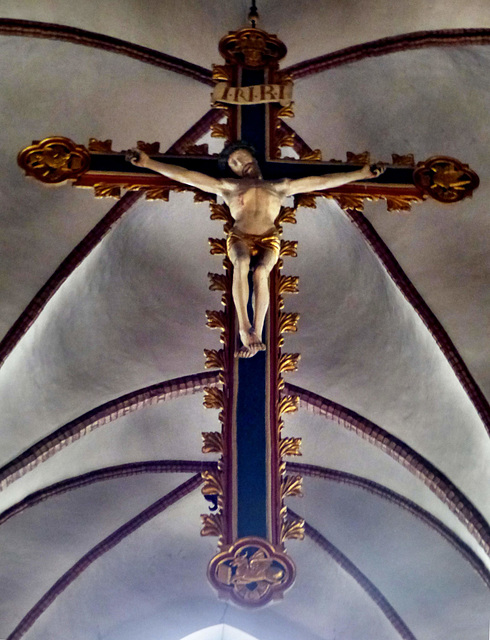Location
Lat, Lng:
Lat, Lng:
You can copy the above to your favourite mapping app.
Address: unknown
Lat, Lng:
You can copy the above to your favourite mapping app.
Address: unknown
See also...
Keywords
Authorizations, license
-
Visible by: Everyone -
All rights reserved
-
83 visits
Flensburg - St. Nicolai


With a population of about 90.000, Flensburg is, after Kiel and Lübeck, the third-largest town in Schleswig-Holstein.
Flensburg was founded at the latest by the middle of the 12th century at the end of the Flensburg Firth by Danish settlers, who were soon joined by German merchants. The place was considered a safe haven with protection from strong winds. Two important trade routes of the time crossed here and the large number of herrings in the firth was a factor for economic well-being. These herrings (pickled in salt) were sent across Europe in medieval times.
In 1284 Danish King Erik Glipping granted the new town charter, the content of which suggests a very lively trade. Duke Waldemar IV of Schleswig confirmed the town charter. Flensburg quickly became the most important city in the Duchy of Schleswig, a Danish fiefdom with the Danish king as feudal lord, which, in contrast to Holstein, which is adjacent to the south, did not belong to the Holy Roman Empire.
During Denmark's war against the Hanseatic League and Holstein, Danish mercenaries first conquered and looted the city in 1426, followed by Holstein and Hanseatic mercenaries in 1431.
St. Nicolai is a Gothic hall church. The construction started around 1390. There were two construction stages In 1332, a smaller church stood in place of the present chancel. The building grew first on their forecourt. After completion of the four western bays, the old church was demolished and the construction continued to the east from 1440. The church is 52 meters long and 21 meters wide.
The triumphal cross
Flensburg was founded at the latest by the middle of the 12th century at the end of the Flensburg Firth by Danish settlers, who were soon joined by German merchants. The place was considered a safe haven with protection from strong winds. Two important trade routes of the time crossed here and the large number of herrings in the firth was a factor for economic well-being. These herrings (pickled in salt) were sent across Europe in medieval times.
In 1284 Danish King Erik Glipping granted the new town charter, the content of which suggests a very lively trade. Duke Waldemar IV of Schleswig confirmed the town charter. Flensburg quickly became the most important city in the Duchy of Schleswig, a Danish fiefdom with the Danish king as feudal lord, which, in contrast to Holstein, which is adjacent to the south, did not belong to the Holy Roman Empire.
During Denmark's war against the Hanseatic League and Holstein, Danish mercenaries first conquered and looted the city in 1426, followed by Holstein and Hanseatic mercenaries in 1431.
St. Nicolai is a Gothic hall church. The construction started around 1390. There were two construction stages In 1332, a smaller church stood in place of the present chancel. The building grew first on their forecourt. After completion of the four western bays, the old church was demolished and the construction continued to the east from 1440. The church is 52 meters long and 21 meters wide.
The triumphal cross
Alexander Prolygin has particularly liked this photo
- Keyboard shortcuts:
Jump to top
RSS feed- Latest comments - Subscribe to the comment feeds of this photo
- ipernity © 2007-2024
- Help & Contact
|
Club news
|
About ipernity
|
History |
ipernity Club & Prices |
Guide of good conduct
Donate | Group guidelines | Privacy policy | Terms of use | Statutes | In memoria -
Facebook
Twitter

Sign-in to write a comment.